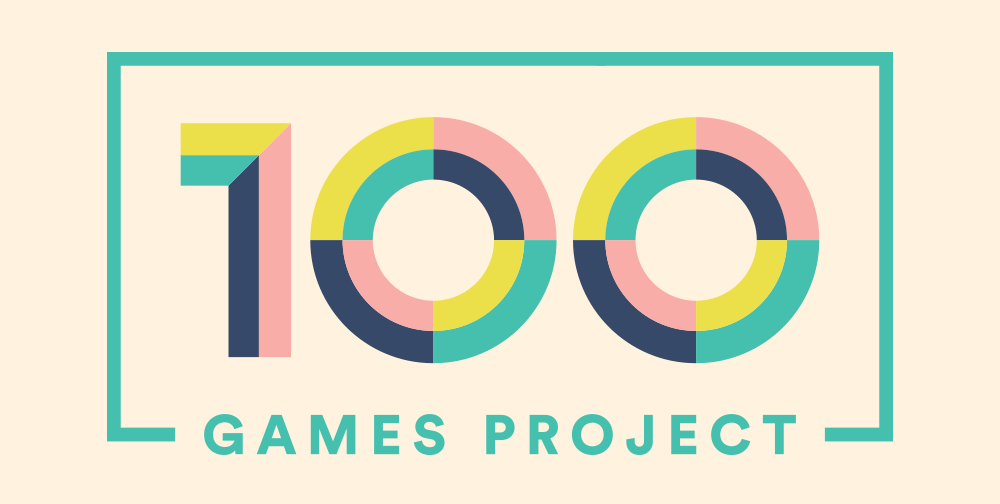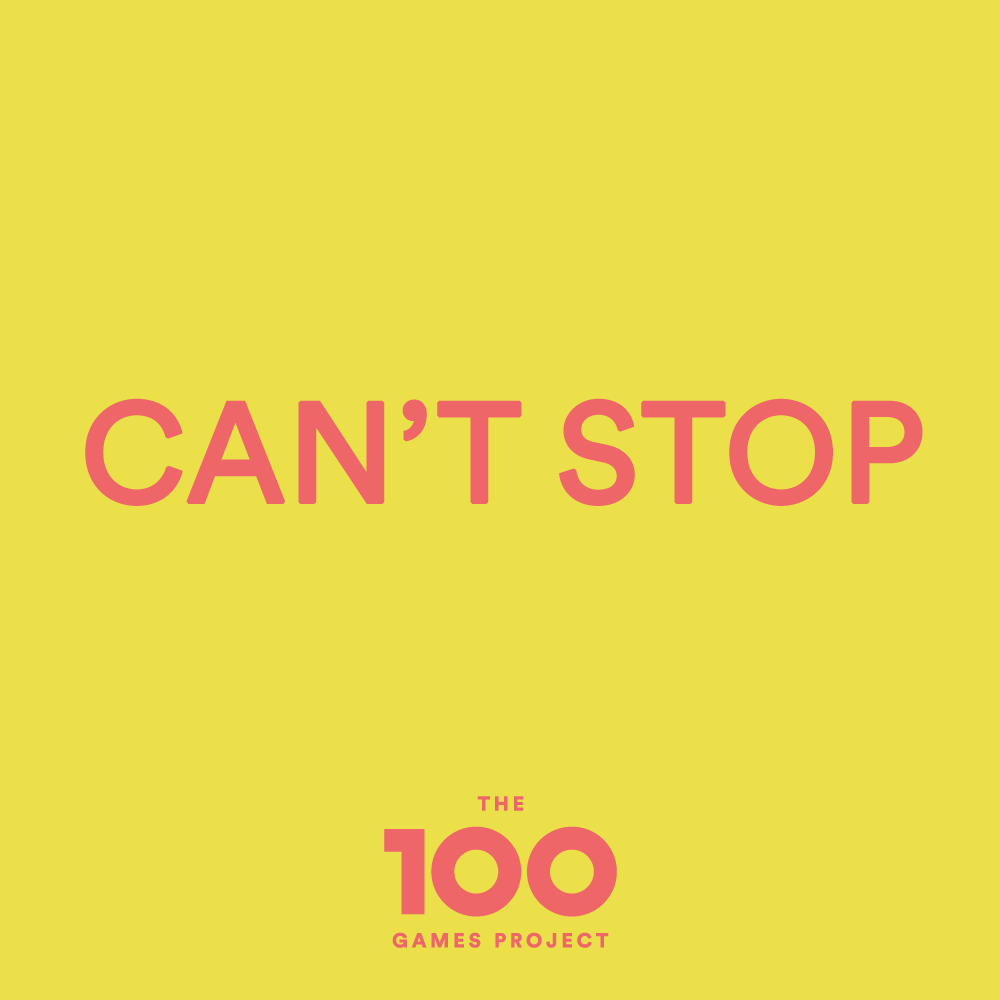Game 5: Can't Stop
If you haven't played this classic, correct that immediately! Can't Stop is a very accessible press your luck game by Sid Sackson, and it's super fun. My vintage copy came from eBay but Can't Stop is now back in print by Eagle-Gryphon Games and in local game stores AND there's a phone app available that is great for pass and play. On each turn, you roll the four dice and divide them into two combinations of two dice each. You move a white placeholder pawn up a space for those combinations in up to three of the numbered columns from two to twelve. After your three placeholders are each allocated to a column, you can choose to continue to roll but if you can't make a combination from subsequent rolls that allows you to advance at least one placeholder pawn per roll, you've busted. Busting is not good. You lose your progress for your turn. I do this a lot. If you have more self-control than I do, you'll stop rolling before you bust and you'll get to put a marker of your color in the columns you advanced in. The first person to advance three markers of their color to the top of the columns (laid out like a bell curve on an octagonal stop sign-shaped board) wins the game.
I played Can't Stop for the first time at a game night hosted by the Looneys a couple of years ago. I did pretty well (but I didn't win - Gina is the champion of Can't Stop at the Looney game night). Even so, I was hooked pretty quickly. I hadn't played in awhile but came back to the game when I visited the Steve Jackson Games office a couple of months ago. I played with Phil Reed, his wife, Gina, and Rhea, the SJ Games Marketing Director - it was a particularly funny game because neither Phil nor I seemed to be able to get on the board at all. It felt like Rhea & Gina made enough progress that each time I rolled I had to do so much catching up to get even with them that I literally couldn't stop rolling the dice. Which inevitably resulted in busting and not getting on the board again. I learned nothing from the tortoise and the hare. And this tension is why this game is so good.
Sid Sackson is awesome. Every time I post about Can't Stop, game designers friends say things like, "Sid Sackson is the man." Eagle-Gryphon ran a Kickstarter a few years ago to republish a signature series of some of his games. He won the Spiel des Jahres in 1981 for Focus and he was nominated for Can't Stop in 1982. He's also the designer of many beloved games like Acquire. And from the very little I know, he's contributed so much more to game design and the game industry.
When Phil and I played, he mentioned Sid Sackson's book, Gamut of Games, had a piece on Solitaire Dice I should read. If you're interested it is available as a free download for Kindle (for Prime members). Solitaire Dice is the beginning of Sid working out Can't Stop. All you need is five dice and paper and pencil to play. You're attempting to balance allocating your combinations of two dice among the fewest number of columns and balancing your fifth "reject" die allocation among three different numbers over the course of the game. Once you've rejected one of your three chosen reject numbers eight times (tracked by tally on paper), the game is over. You lose points for any combinations between two and twelve you've hit fewer than five times. If you've hit a combo five times, it zeroes out, and anything above a tally of five scores inversely to the likelihood of rolling it (70 points for each eleven combo more than five but only twenty points for each seven combo over five tallies since it's more likely to be hit). Sackson offers advice on how to play the game multiplayer with everyone working off the same rolls of five dice but hiding their allocations from each other. It's amazing to see the difference in elegance between Can't Stop and Solitaire Dice. It's a great insight into game development. I always thought the stop sign design of Can't Stop was ugly and wasn't a big fan of the aesthetic of the game but I really appreciate how functional it is. And you really can't argue with a game that has stayed alive in some fashion since 1980 - 36 years now. A+, will play again :), #DontStopTilYouGetEnough















